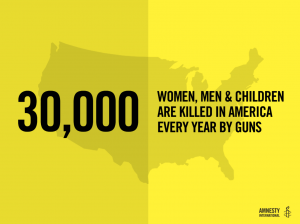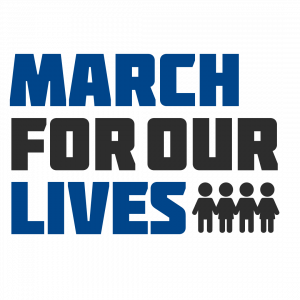Gun Laws, Gun Policies, Gun Violence, Gun Control
Discussion Guide for Conceal and Carry
The discussion guide is centered around the Conceal and Carry play by Sean Christopher Lewis. Above is a link that you can use to help you lead discussions around gun control and gun violence. Please click on the link to explore further.
Discussion Guides for various Groups:
Below are more discussion guides that you can use to lead conversations with different groups.
- Conceal and Carry – Discussion Questions for Students
- Conceal and Carry – Discussion Questions for Gun Owners
- Conceal and Carry – Discussion Questions for People of Color
- Conceal and Carry – Discussion Questions for Political Groups
- Conceal and Carry – Discussion Questions for Survivors
Background Information:
- In 2004, the Federal Assault Weapons Ban (AWB), H.R. 4296 – Public Safety and Recreational Firearms Use Protection Act, expired in accordance with its sunset provision, and it has not been renewed. There have been multiple attempts to renew the ban, but none have been successful.
- On January 8, 2011, U.S. Representative Gabrielle Giffords and eighteen others were shot during a constituent meeting held in a supermarket parking lot in Casas Adobes, Arizona. Six people died, including Federal District Court Chief Judge John Roll; Gabe Zimmerman, one of Giffords’ staffers; and a nine-year-old girl, Christina-Taylor Green. Giffords was holding the meeting, called “Congress on Your Corner”, in the parking lot of a Safeway when 22-year-old Jared Lee Loughner drew a pistol and shot her in the head before proceeding to fire on other people. One additional person was injured in the immediate aftermath of the shooting.
- The Sandy Hook Elementary School shooting occurred on December 14, 2012, in Newtown, Connecticut, when 20-year-old Adam Lanza shot and killed 26 people, including 20 children between six and seven years old, and six adult staff members. Earlier that day, before driving to the school, he shot and killed his mother at their Newtown home. As first responders arrived at the school, Lanza committed suicide by shooting himself in the head. The incident remains the deadliest mass shooting at either a primary or secondary school in U.S. history, the second-deadliest U.S. school shooting overall.
- The U.S. ranks #11th in the world in violent gun deaths, behind El Salvador, Venezuela, Guatemala, Honduras and Jamaica. The U.S. has 4.43 gun deaths per 100,000 people. The U.S. gun homicide rate is 25 times higher than that of other high-income countries. The U.S. has the highest number of civilian firearms per residents in the world.
- There are approximately 30,000 gun deaths in the US every year.

Ideas for Helping out with the Issue:
1. Find a local organization in your community, and get involved.
2. Take Action! Everytown Actions
- Register to vote.
- Write to your Senator.
- Find and support your Gun Sense Candidates.
- Join the Gun Sense Action Network.
- Join Moms Demand Action group.
- Join a Students Demand Action group.
3. Learn about gun statistics in your state. Gun Statistics by State
4. Learn about gun laws in your state. Gun Laws by State
5. Take Action! Giffords – Take Action
6. Review and sign a petition. The Coalition to Stop Gun Violence
7. Work on evidence-based solutions. Evidence Based Solutions
8. Find a policy listed below that you support, and take action!
Keep Guns Out of the Wrong Hands
- Alert Local Law Enforcement of Failed Background Checks
- Background Checks on All Gun Sales
- Close the Charleston Loophole
- Disarm Hate
- Extreme Risk Laws
- Prevent Gun Trafficking
- Prohibit People With Dangerous Histories From Having Guns
- Require Prohibited People to Turn in Their Guns
- Waiting Periods
Keep Communities Safe
- Block Concealed Carry Reciprocity
- Keep Guns off Campus
- Prohibit Guns in Sensitive Areas
- Prohibit Open Carry
- Repeal Stand Your Ground Laws
- Require Permits to Carry Concealed Guns in Public
- Strong Standards for Carrying Concealed Guns in Public
- Victims of Crime Act (VOCA) Assistance Funding
- Violence Intervention Programs
Keep Guns Out of Schools
- Keep Guns off Campus
- Prohibit Guns in Sensitive Areas
- Reconsider Active Shooter Drills
- Stop Arming Teachers
- Threat Identification and Assessment Programs in Schools
Be a Responsible Gun Owner
Hold the Gun Industry Accountability
Prohibit Assault Weapons & Dangerous Hardware
Sources to Consult:
- Gun Violence Archive
- Amnesty International
- Arms Control – Amnesty International
- Global Arms Trade Treaty, since 12/24/2014
- Human Rights and the U.S. Gun Violence Crisis
- Scars of Survival: Gun Violence and Barriers to Reparation in the USA
- Stop the gun violence pandemic – RightsNow!
NGOs Working on this Issue:
- The Coalition to Stop Gun Violence
- Everytown
- United Against Gun Violence | Brady
- Newtown Action Alliance
- Violence Policy Center
- Giffords
- Stop Handgun Violence
- New Yorkers Against Gun Violence
- Never Again MSD
- March For Our Lives
Key Facts About the Issue:
- Deaths from Gun Violence: How the U.S. Compares with the Rest of the World
- Gun Statistics Explained with Graphs
- America’s Gun Culture Explained with Graphs
- Mass Shootings since Sandy Hook
- How U.S. Gun Control Compares to the Rest of the World – See exercise below.
As an exercise, compare U.S. gun regulations to gun regulations in other developed countries. Click on links to read about gun-control laws in detail.
- Germany: To buy a gun, anyone under the age of 25 has to pass a psychiatric evaluation. The Weapons Act bans fully automated firearms.
- Finland: Handgun license applicants are allowed to purchase firearms only if they can prove they are active members of regulated shooting clubs. Before they can get a gun, applicants must pass an aptitude test, submit to a police interview and show they have a proper gun storage unit.
- Italy: To secure a gun permit, one must establish a genuine reason to possess a firearm and pass a background check considering both criminal and mental health records.
- France: Firearms applicants must have no criminal record and pass a background check that considers the reason for the gun purchase and evaluates the criminal, mental and health records of the applicant.
- United Kingdom and Japan: Handguns are illegal for private citizens.
Related Profiles:
As an exercise, compare the responses from other government’s following mass shootings in their countries.
Port Arthur Massacre, Australia 1996, and their Government’s Response:
On April 28-29, 1996, there was a mass shooting in Port Arthur, Tasmania, Australia. The shooting left 35 people dead, and 18 people wounded. Twelve days after the massacre, the Australian prime minister, John Howard, announced a sweeping package of gun reforms in a country where firearms had long been considered an essential prop in the national mythology of life in the bush. Less than a month, later, federal and state legislators crafted the National Firearms Agreement. It created extensive licensing and registration procedures, which included a 28-day waiting period for gun sales. In addition, it banned all fully automatic or semiautomatic weapons, except when potential buyers could provide a valid reason—which did not include self-defense—for owning such a firearm. The federal government also instituted a gun-buyback program, which resulted in the surrender of some 700,000 firearms.
Christchurch Massacre, New Zealand 2019, and their Government’s Response:
On March 25, 2019, Brenton Tarrant, a white supremacist, killed 51 worshippers and injured dozens other at two Christchurch, New Zealand mosques. Within a month, Prime Minister Jacinda Ardern responded by banning semi-automatic weapons and implementing a buyback program for gun owners. In the aftermath of the shooting, New Zealand’s parliament voted 119-1 to pass a bill banning most semi-automatic weapons, as well as parts that allow lower-powered firearms to be modified into higher-powered ones. Prime Minister Jacinda Ardern, has garnered international recognition for her swift response to the shooting.
Economic Impact:
As an exercise, consider the economic impact of the firearms industry on the U.S. economy, and the industries that would be economically impacted by changes in U.S. gun regulations.
Americans own nearly half (46%) of the estimated 857 million civilian-owned guns worldwide.
In 2019, the firearms and ammunition industry was responsible for approximately $60 billion in total economic activity in the country. The manufacture and sale of firearms and hunting supplies create jobs in the United States, but the industry also contributes to the economy as a whole.
Related Videos:
- Vox: America’s gun problem, explained in 90 seconds
- The Economist: What does gun violence in America look like?
- Vox: The gun solution we’re not talking about
- AJ+: Gun Violence – How The US Compares To The Rest Of The World
Potential Panelists:
- Dr. Jennifer Carlson, University of Arizona
- Representative Jennifer Longdon, Arizona House District 24
- Representative Daniel Hernandez, Arizona House District 2
- Honorable Ron Barber, former Rep- AZ-02
- Pat Maisch, survivor of Tucson shooting, Moms Demand Action activist
- Pam Simon, survivor of Tucson shooting, Moms Demand Action activist
Resources:
Suicide Prevention:
- National Suicide Prevention Lifeline
- Suicide Prevention Hotline 1-800-273-8255
- Lifeline Chat : Lifeline
- Nacional de Prevención del Suicidio, En Español, 1-888-628-9454
Plays:
Films:
- Bowling for Columbine, Michael Moore, 2002 Documentary
Art:
- 7 Artworks Taking a Stance on Gun Violence
- Artists Take a Stand on Gun Violence
- New Art Gallery Exhibit Depicts Effects of Gun Violence
- Loaded Objects: Addressing Gun Violence Through Art in the Gallery and Beyond
- National Youth Art Movement
- Making the Gun Violence Epidemic Visible Through Art and Activism
- #UNLOAD
Sample Lesson Plans for Middle and High School students:
- PBS Newshour – Teens Propose their own Solutions to School Shootings
- Education World – Gun Control in America: Student Discussion Guide
- Greater Good Berkeley Education – Nine ways to help Students discuss Guns and Violence
Key Laws about the Issue:
As an exercise, compare gun laws between Arizona and Connecticut. Both states experienced horrific and tragic mass shootings in 2011 and 2012, respectively.
- Must be 18 to purchase/possess a firearm without parental consent. Some exceptions for 14-17 (such as hunting).
- No background check required.
- No firearm registration required.
- No state permit required.
- No waiting period.
- No ban on assault weapons.
- No magazine capacity restriction.
- No permit required for open carry, if over age 18.
- No permit required for concealed carry, if over age 21.
- All Arizona tribes recognize federal law, including the “safe passage” provision of the federal Firearm Owners Protection Act Act (FOPA).*
*FOPA provides that, notwithstanding any state, tribal, or local law, and while making a continuous journey, a person who is not a prohibited possessor is entitled to transport a firearm or ammunition for any lawful purpose from any place where he may lawfully possess and carry such firearm to any other place where he may lawfully possess and carry such firearm or ammunition if, during such transportation the firearm is unloaded, and neither the firearm nor any ammunition being transported is readily accessible or is directly accessible from the passenger compartment of such transporting vehicle.
- Must be 21 to purchase and possess handguns, 18 to purchase long guns, no minimum age to possess long guns.
- Must have a permit for eligibility certificate to sell and carry guns.
- Must have a permit to carry guns.
- Must be a legal resident of the United States.
- Must have a residence or business in the state.
- Guns must be used for “lawful purpose” only.
- Must not be convicted of a felony.
- Has not been convicted of a juvenile offense.
- Has not been convicted of a crime because of mental disease.
- Not involved with a restraining or protective order.
- Since the Mashantucket Pequot are a federally recognized tribe, any gun laws will follow tribal laws.
- No person shall carry any pistol, revolver, rifle, shotgun or any other firearm within the boundaries of the Mohegan Indian Reservation for any purpose unless said person has been issued a permit to carry such firearm by the Department of Public Safety.
Related GHRD Groups:


